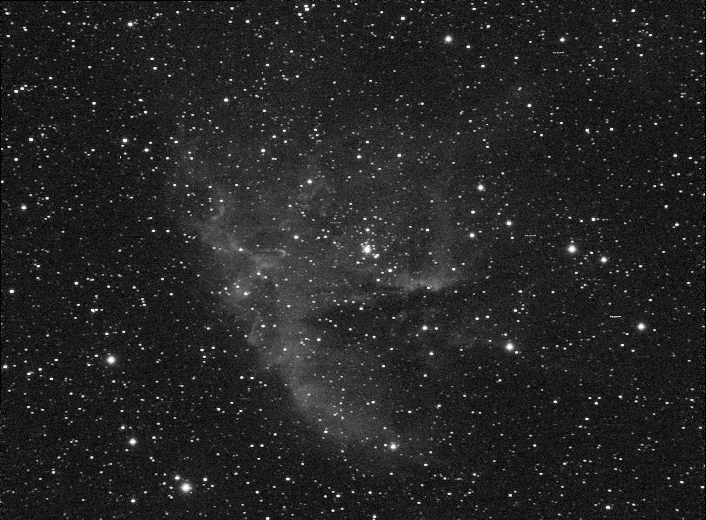PacMan Bi-Color Ha-SII-SII with only 2 hours of data

Having recently broken the sound barrier with improvements to my Raspberry Pi’s tracking software, I am now able to take unguided 8-minute exposures.
I set out to capture the PacMan nebula (NGC 281) in narrowband in order to do a full Hubble Palette but the weather turned ugly so I was only able to capture one hour in Hydrogen-alpha (Ha) and one hour in Sulfur-II (SII). According to forecasts the weather won’t improve for at least a week.
Here is what I have. I don’t think it is too bad considering that top-tier images in narrowband have at least 10-20 hours of data compared to my 2 hours. Another negative going against me is that my f/5.9 refractor is a bit too slow for this type of work, and my Atik 314E is not at all sensitive to the red part of the light spectrum. This is why I image in bin2 mode. If you zoom in you can see that my stars are square. These deficiencies can be solved in a variety of ways but for now this is what I have.
How to interpret the colors? By in large this is a hydrogen gas cloud with hints of sulfur (and oxygen that I haven’t captured yet) but it is predominantly hydrogen. The dark red areas are almost 100% hydrogen, the lighter red to nearly gray is sulfur plus hydrogen.
Ha is assigned to the red channel, SII is split 50% to green, 50% to blue, and then SII is boosted 2x. The 2x boosting allows SII to play a prominent role but boosting also means doubling the noise. In the future I will plan on capturing two to four times more SII frames.
For perspective here is the Ha stack:

and here is the SII stack:

when those two are combined you get the color image above.
If you zoom in on the SII image you may notice that the stars are elongated whereas the stars in the Ha image are nearly perfect. The reason is that the atmosphere was particularly turbulent during the hour I captured the SII frames. The ambient temperature dropped at a high rate of 2 degrees Celsius per hour. Thank you to Dr. William G. Unruh, Professor of Physics & Astronomy at University of British Columbia for pointing that out.